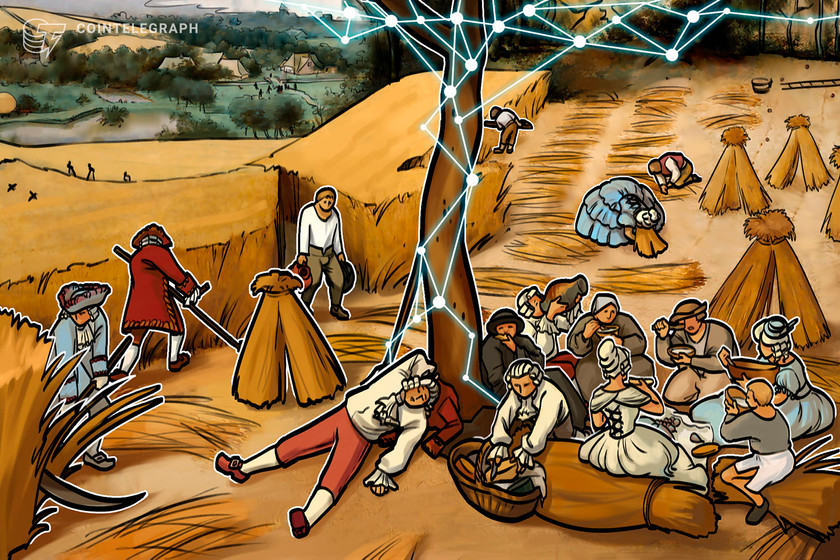It’s time to put the dukes down and work together for blockchain’s future

Blockchain’s further success is contingent on the establishment of a strong free market and positive competition.
Humans over the centuries found themselves quarreling with each other over everything from food to land to ideology, only to later find themselves at peace and cooperating. Later, once more, they’d return to draw arms. Great schisms between Catholicism and Eastern Orthodox Christianity later repeated with the Protestant–Catholic wars of the 17th century, until peace finally settled upon the parties centuries after they’d begun.
Fast forward 400 years, and it’s clear that technology has done nothing to curb our tribal instincts. If anything, the rise of blockchain has magnified these instincts in a destructive way. Tribalism impedes blockchain from maximizing its limitless potential, yet the “your coin vs. my coin” attitude reigns supreme, including among industry leaders. At the same time, our ability to navigate choppy waters and ride the tide of mass adoption rests on our willingness to work together despite our base tendencies for tribal behavior.
Tribalism runs deep
The issue runs deeper than economic and political guiding principles, though. Many cryptocurrencies develop loyal followings and become tribal in nature, taking up ambivalent if not blatantly hostile attitudes toward other coins.
One can easily find barbs in the cryptoverse, on Twitter or on Reddit, where users troll other coins with taunts like “shitcoin.” This toxic brand of tribalism also trickles down to blockchain developers, who may discard superior technologies just because they belong to a different camp. Obviously, this is detrimental to the progress of blockchain applications as a whole.
This tribalism could potentially scare newcomers and talented developers away and stunt its growth and development. As such, this immature feud of superiority complexes that’s led to toxic tribalism within the blockchain community must be put to an end for the sake of all parties that, in the end, share the same ultimate goal of propelling blockchain into the mainstream.
A bigger, tastier, digital pie
Many of us recall the witty Wendy’s jabs at its competitors and other users on Twitter from the last decade. But we can hardly imagine the big guns openly calling each other’s products “s—” or coining other crass monikers of their products on Twitter in the same way crypto users have trashed competing digital currencies.
But there is a bright side and a way forward.
For starters, the existence of fierce competition and intense passion for products reveals there is a vibrant market to begin with. Almost every venture capital presentation includes a slide about one’s competitors. Furthermore, even though blockchain projects may compete with one another for users, developer mindshare and community, there is an overarching need for collaboration in expanding blockchain’s reach. Currently, only a fraction of the population has any exposure to the blockchain space, and uniting to bridge the gaps for newcomers should take priority over petty internal contests.
There’s an understanding among businesses that competition is healthy and “may the best man win” and not “may the best man win and take shots at the competitor with slander or libel.” This understanding is precisely what would benefit the crypto and blockchain worlds: healthy competition without the snobbery that exists today.
Indeed, many in the blockchain space are seeking to turn the corner and find a new path. With interoperability on the cusp of becoming reality, many developers are uniting to cooperate on bridging between chains. The results of such technical progress are monumental, signifying a palpable unity among developers to see through the success of the underlying engine for blockchain.
The interconnectedness of chains, at both a technical and ideological level, leverages Metcalfe’s Law to spur growth for all. Metcalfe’s Law states that the value or utility of a network is proportional to the square of the number of nodes it has connected. Connecting chains and ecosystems together exponentially accelerates Metcalfe’s Law at work. These kinds of healthy competitions are what’s necessary to advance the cause of decentralized finance — less protectionism, more fraternity. Polkadot and Cosmos are thriving decentralized communities and are examples of what mature cooperation can bring forth inside DeFi.
The blockchain dream may have a long way to go before blossoming into the fruitful ecosystem pioneers dreamed of it becoming. It is true that a house divided against itself cannot stand, and the case could not be more evident in the world of blockchain. It’s time for developers and crypto enthusiasts to put their dukes down and work together.
The views, thoughts and opinions expressed here are the author’s alone and do not necessarily reflect or represent the views and opinions of Cointelegraph.



